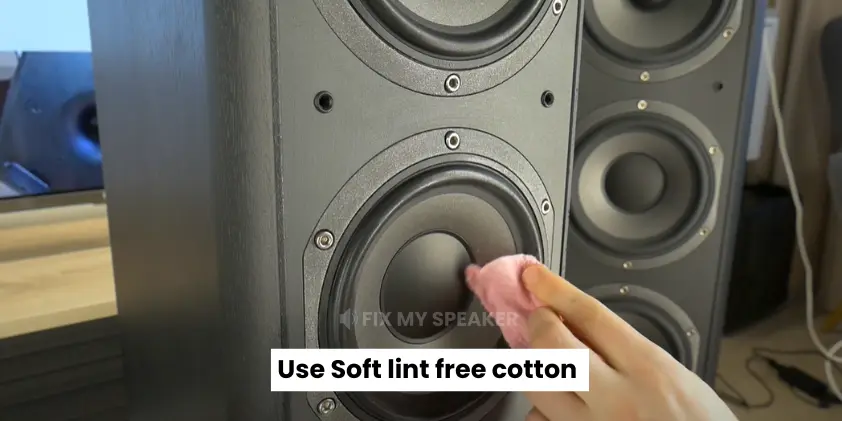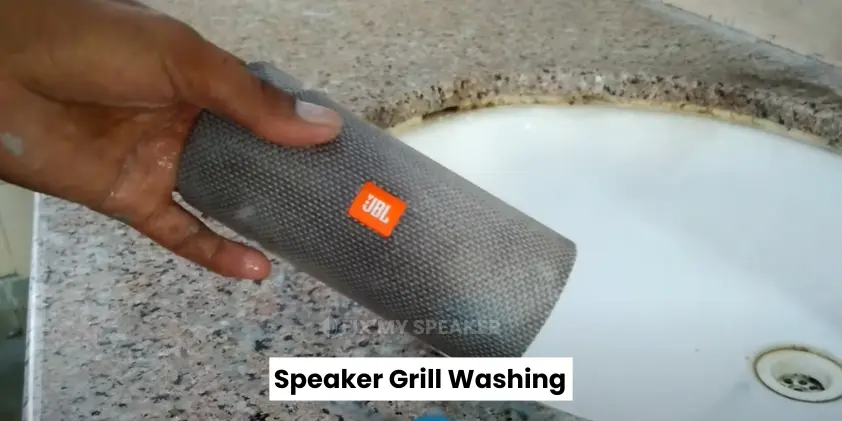Fix My Speaker Dust – How Cleaning Dust Restores Clear Sound
The sound system is a favorite for many of us. Do you remember woofers? How their bass and clean audio attract the listener—crisp sound doubles and triples the fun of enjoyable moments? But with broken sound, it’s a frustrating experience. It sounds like something is stuck inside a box…
The problem is: How to fix this muffled speaker sound without any damage?
Don’t get confused. Believe me, in many cases, invisible dust gets trapped in speakers. It continuously stops the speaker from conveying a clear and loud sound.
I’m here to share a proper guide about fixing dust in speakers. It’s a complete plan to stop the weak sound. Before getting started, if you are sure it’s a hardware issue, then you can skip and call an expert.
Overview of Fix My Speaker Dust
“Fix My Speaker Dust” is a common guide that’s widely available on the internet. It’s all about how to fix trapped dust in speakers. It doesn’t interfere with software or hardware, but offers a simple DIY solution against micro-particle accumulation that blocks the path of sound in speakers.
How to Know If Dust Is the Problem?
Here, before moving further, I’m going to write down some signs of dust-damaged speakers that will indicate to you, to fix them early:
Common Reasons for Dust Buildup in Speakers
- The primary culprit is household dust that continuously floats in the shape of dander, textile fiber, skin cells, etc.
- Heavy particles, such as pet hair, Microsand, and pollen, settle directly onto the speaker cone, dust cap, adding mass that prevents it from vibrating freely and accurately.
Why You Need to Clean Speaker Dust?

Better Audio Quality
You can ensure a clear sound from portable and loudspeakers with regular cleaning. But if you are experiencing sound problems in your phone’s speaker, you can use our Phone speaker cleaner tool for effective cleaning.
Avoid Permanent Damage
Dust doesn’t just sit on the surface. It can slowly affect the inner parts of your speaker, reducing performance over time.
Save on Repairs
For minor dust accumulation, you can save money by simply following these guidelines; for severe dust damage, however, professional repair is the better option.
Restore Loudness and Clarity
Daily wiping is usually enough to improve volume. If that fails, I recommend searching for an online solution to restore the original volume before calling professional help.
Fix My Speaker Dust – What to Use, What to Avoid
Wiping with a damp cloth is a perfect solution, but before starting, make sure to unplug the speaker and turn it off. Here, it is compulsory to be aware of the speaker manufacturer’s guide to protect your speaker from permanent damage during the cleaning process.
Five Steps to Restore Perfect Sound Clarity
With time, a lot of dust accumulates on loudspeakers; it not only affects the sound but also degrades the appearance of the speakers. Over the years, I have bought more than 50 different second-hand speakers, and they all needed cleaning, mostly on the outside but rarely on the inside.
Using Microfiber:
To make the speaker scratch-free, the best option for cleaning is a Microfiber lint-free cloth soaked in warm water, whether the speaker is portable or a sound system. Don’t wet it too much, but slightly dampen. Start wiping the speaker gently in a circular motion.

Speaker boxes are often made of plastic or MDF (Medium Density Fiberboard) with a protective layer on top. So, cleaning them carefully without damage is the first priority.
Don’t be afraid to clean speaker drivers, too; make sure you touch them gently and the cloth is not too damp.
Fix stains and stubborn grime:
Once you complete this, you will realize that a single wipe is not enough. Repeat the process because the first cleaning collects surface dust only. Sticky stain removal is necessary to make the speaker look pretty and neat.
You can dampen the piece of microfiber cloth in a solution of mild soap with water if you still notice stubborn grime on the exterior surface. But avoid putting a massive amount of cleaning solution on the speaker surface.
Clean hard-to-reach Areas:
Buttons and charging ports can collect massive dust around them; you cannot ignore them. During my cleaning experience, I realized that the extraction of trapped dust is super easy with a soft-bristle brush because its soft, small bristles can work against dust in hard-to-reach areas like the charging port and buttons.

Don’t be afraid to clean speaker drivers, too; make sure you touch them gently and the cloth is not too damp. For sound systems, you can use a soft brush after unscrewing the speaker terminal to achieve a perfect cleaning. The bottom of the speaker is the part that is exposed to dust more; you can open its feet, if possible, and clean them properly with a cloth.
Address internal components:
After performing internal cleaning on a lot of speakers, I came to know that you should only open speakers if you have some knowledge about electronics. Ask this question to yourself!
Do you have any?
If yes, then the key point for effective cleaning is gentleness. You can use compressed air and a soft brush to make the internal parts shiny and pretty.
Don’t forget the dusty speaker grill:
The speaker grille is a protective layer exactly on the speaker driver or found in front of industrial or loudspeakers. It actually stops foreign objects like dust, lint, sand, or microparticles from entering the speaker.

Leaving the protective layer dusty would be an injustice to the speaker. Grilles can accumulate so much dirt while performing protection tasks. Here, how to clean them without damage is a big deal!
Taking them off and directly cleaning them with hot water is a good option. You can also use a cleaning solution and gently brush the grille to remove all lint, grime, and stains.
Conclusion
You now know the Fix My Speaker Dust solution! You’ve seen how dust can be a big culprit, and by following this guide, you can fix it. Forget expensive hardware fears and try to get clean audio with a DIY fix. Roughly 10 minutes are enough for a deep cleaning, but always pay special attention to delicate parts to avoid any damage.
